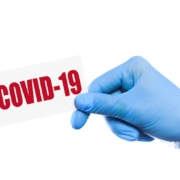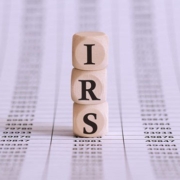A BREAKDOWN OF THE PROPOSED IRS 1040
Article Highlights:
- The New Draft 1040 Form
- Comparing the Old and New 1040 Forms
- The Same Two-Page Length
- Six Additional Schedules
- Other Income
- Adjustments to Income
- Additional Taxes
- Nonrefundable Credits
- Other Taxes
- Other Payments and Refundable Credits
- Foreign Addresses and Third-Party Designees
- New Pass-Through Deduction
Remember the IRS’s promise about being able to file your income tax return using a postcard?
The reality of the new 1040 form is a far cry from a postcard. Although the administration insists that it has simplified the process of preparing your tax return, a few minutes of comparing the old 1040 to the new draft version shows that the redesign did little more than change it from the previous two-page form to two half-size pages – with six schedules provided separately. All but four of the 79 lines from the old version remain on the new one; they’re just divided up differently. Unless all of your income comes from wages, interest, dividends, pensions and Social Security, you will now have more schedules to fill out than you did before, and you still have a lot of work ahead of you.
How much new work does the revised version represent? Here’s a quick rundown of the six new schedules:
- Schedule 1 – Taxpayers with self-employment income will need to fill out Schedule 1 and Schedule C. Those who have income from capital-gains transactions will have to complete Schedules 1 and D, those with rental income will fill out Schedules 1 and E, and those with farm income will complete Schedules 1 and F. (As in the past, the income and expense on Schedules C, D, E and F will come from other forms, schedules and worksheets, so the new form presents no simplification there.) Schedule 1 will also be the place to report taxable alimony, unemployment, K-1, and other income, as well as the 11 possible adjustments to income, including health account contributions, IRA and retirement contributions, educator expenses, and student-loan interest.
- Schedule 2 – Taxpayers who are parents and who choose to be taxed on their children’s investment income will use Schedule 2 and Form 8814. This schedule is also used alongside Form 6251 for those who are subject to the alternative minimum tax. Lower-income taxpayers who have received more of the premium tax credit than they should have received will also use Schedule 2 and Form 8962 for repayment, as required under the Affordable Care Act (ACA).
- Schedule 3 – Taxpayers who are eligible for nonrefundable credits will use Schedule 3 (along with other forms, depending upon where their credits are from). The taxpayers will use Form 1116 if these credits are connected to a foreign tax credit, Form 8863 if they are from education credits, and Form 2441 for childcare credits. Schedule 3 is also the place to enter certain recently introduced portions of the child tax credit (and other dependent-based credits) and any residential energy credits. Those who are eligible for a general business tax credit will combine Schedule 3 with Form 8801.
- Schedule 4 – Those who are responsible for additional taxes in addition to those due for income need to use Schedule 4. What are these additional taxes? They include the tax on early withdrawals from pension plans (which should be entered on Form 5329), the taxes due from self-employed individuals in lieu of payroll taxes, which aren’t deducted for those individuals (using Schedule SE), and household employment taxes using Schedule H. Other fees recorded on Schedule 4 include the penalty for not purchasing insurance according to the rules of the ACA, the net investment income tax of 3.8% for high-income taxpayers (using Form 8960), and the additional Medicare taxes for high-income taxpayers (using Form 8959).
- Schedule 5 – Do you prepay your taxes and then claim a credit for having done so? If so, you’ll need to fill out Schedule 5, regardless of whether you’re claiming this credit on Form 1040-ES. This includes any 2017 refunds that you credit to the current year’s taxes, payment that you made when requesting an extension to file, and the net ACA premium tax credit for health insurance purchased through a government marketplace (using Form 8962). The supposed idea behind the revised 1040 is simplification, but process for the new Schedule 5 seems much more complex than the old one, as this schedule cannot be used for the refundable portion of the child tax credit, the earned income tax credit, or the refundable portion of the American Opportunity tax credit. Those credits, after completing the required backup forms, are entered on the 1040 itself and then combined with the payments and credits from Schedule 5.
- Schedule 6 – Taxpayers who have foreign addresses were once able to enter those addresses directly at the top of the 1040 form, but, under the new design, that information is reserved for Schedule 6. The same form will be used to enter the contact information of any third party whom the IRS should reach out to if they have questions about certain items on the taxpayer’s return (without the need of providing power of attorney). Making matters more complex is the fact that, even though the new 1040’s first page also has a spot for paid preparers to provide their contact information, this area does not provide a space for the preparer’s PIN or phone number.
With all that being said, are the new schedules and the shortened 1040 simpler for taxpayers? Under the new process, pretty much everybody outside of retirees and single, wage-earning taxpayers will need to fill out one or more of the schedules in addition to the 1040, so there’s a good chance that people are going to end up confused (or worse), and there is an even better chance that they will make mistakes if they decide to take prepare their taxes on their own. Even retirees will likely need assistance, as many of them will need help with the minimum-distribution calculations for their retirement plans, as well as with other complicated issues such as the gift tax limits and IRA-to-charity contributions.
If it already seems clear that the new forms are actually more complicated than the old ones, we’ve saved the most confusing part for last. The new 1040 has a line labeled “qualified business income deduction” that connects directly to a new deduction under the tax reform act. This deduction is generally 20% of pass-through income for businesses, and its calculation is highly complicated. This deduction will apply to nearly all self-employed taxpayers, landlords, members of partnerships, and shareholders in S corporations. Although the instructions for this calculation have not yet been finalized, they are almost certain to be long and difficult to follow, with lots of required entries to fill out in various worksheets.
Finally, some have noted that wage earners who need to reconcile their ACA premium tax credit, and those who need to take a deduction for an IRA contribution, will no longer find a line for this on the 1040. Instead, they’ll need to use Schedule 5 or 2 for the ACA credit and Schedule 1 for the IRA deduction.
Of course, the IRS has not finalized the new form yet, and it is asking for comments. Thus, there is a good chance that some changes will occur to the final version. If you have tax questions during the year, or if would like to do some tax planning, please call this office.








Leave a Reply
Want to join the discussion?Feel free to contribute!